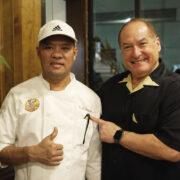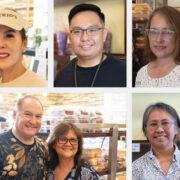The 2020 Census is underway with only two years left to go, and for Asian Americans, the upcoming census is being seen as either an opportunity for being accurately counted, or a chance to be improperly represented.
The decennial census looks to find population changes and other information of who makes up the United States, and more importantly uses the derived data to address the nation’s needs, like determining representation of each area in the U.S. House of Representatives.
Despite having been conducted since 1790, the upcoming 2020 Census to take place on April 1, 2020, will be the first to have an “Asian” category alongside categories for white and black as reported on The Conversation by Jennifer Lee, a sociology professor at Columbia University.
The census would further allow Asians to check off their country of origin such as Chinese, Vietnamese, Korean, Japanese, Filipino, and so on.
But factors such as the current political and racial climates have advocates for an accurate count worried that Asian Americans may opt out of disclosing information, thus rendering an incomplete picture of their communities in the U.S.
Asian Americans are currently the fastest-growing community in the nation, growing 72 percent between the years 2000 and 2015 — from 11.9 million to 20.4 million, according to fact tank Pew Research Center. Approximately seven percent of the U.S. population belong to the AAPI community. In California, the percentage goes a little over 15 percent.
The U.S. Asian American population is also very diverse, as the 20 million Asian Americans find their roots coming from over 20 countries throughout Asia.
Advocates for disaggregated information argue that failing to get an accurate count of these communities means taking a risk in making sure specific communities are served accordingly whether in health, education, or other programs.
From the last 2010 Census, data found that Filipino-Americans became the largest Asian American group in California, while Chinese Americans remained the largest in the U.S. Data went deeper finding that in the county of Los Angeles, Filipinos and Koreans were the two largest, with growth being seen with Thai Americans as well.
“If you don’t have an accurate census, you won’t know any of this,” Stewart Kwoh said late last year in a panel for the upcoming census. Kwoh is the founding president and executive director of Asian Americans Advancing Justice, Los Angeles (AAJC), a legal and civil rights organization
“If you lump all Asians together, then you really don’t know us at all,” he added.
Language, for example, has also been a reason advocates have been pushing for an accurate count. Approximately one-third of Asian-Americans do not speak English very well, according to self-reported data from the American Communities Survey.
Kwoh used the case of natural disaster in Nevada as an example where Filipinos made up half of the overall Asian population.
“Let’s say there’s a disaster in Nevada. Wouldn’t you want to know that Filipinos are half of the Asian population? And how you are going to outreach to them?” Kwoh told the Asian Journal.
He added, “Culturally, in language, you need to have that disaggregated data. Otherwise the government agencies are almost blind to who they are serving. It’s crucial.”
In regards to social and economic indicators, only three in 50 Filipino-Americans in the U.S. live below the poverty line for example, compared to approximately one in four Hmong Americans.
In health where only 14 percent of those in AAPI communities lack healthcare, disaggregated data shows disparities between Japanese-Americans and Korean-Americans — the former having eight percent without healthcare, and the later at 27 percent without.






